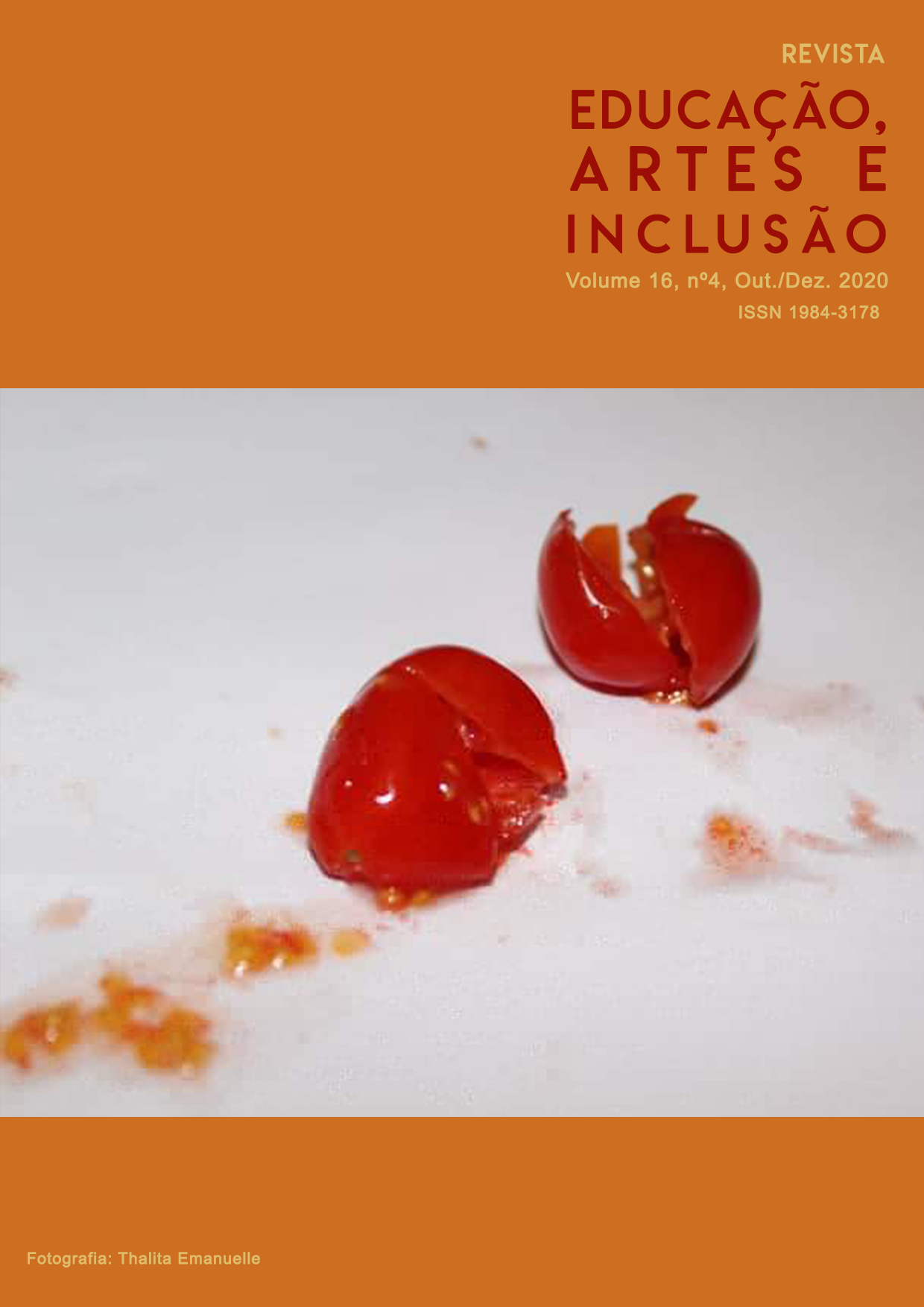Solidarity Dramaturgies
DOI:
https://doi.org/10.5965/19843178164202010Keywords:
performance, projeto participativoAbstract
From the classic dramaturgies and their stagings orbiting around the text, to post-modern and contemporary dramaturgies, with their performative dimensions that make room for a collective writing jointly with the onlookers, the concept of dramaturgy has undergone a process of opening-up proportional to that of the passage of time. The word "dramaturgy" has lost its textual primacy granted by Euro-Centrism to open itself up to somatic manifestations, transforming themselves into happenings. The new spectator of contemporary dramaturgies plays a fundamental role in the creation of writing, which, from the individual, becomes collective, and may, in performance, reach the point of changing the performative programme initially proposed by the artist. I would like to think, at this point, in terms of the concept of dramaturgy in the performance field, and, more specifically, in the field of relational and participatory performance. Contemplating a European participatory performance art project, in which I was a guest artist, I will reflect on the possible constitution of a "Solidarity Dramaturgy", which could encompass or lead to the broader field of “Art of Care”, making room for new artistic possibilities. To develop this reflection, I have chosen the form of diary, a witness of this cartographic research that seeks its objectives through a retelling of the events. I offer you an invitation to join me on this journey. Shall we dance to the rhythm of the writing together?
Downloads
References
ALICE, Tania. “PARC (Performances de arte relacional como cura) – performance e somatic Experiencing”. UFRGS: Revista da Presença, 2015.
BISHOP, Claire. Participation - documents of contemporary art. Cambridge: The MIT Press, 2006.?
BLUM, Harold (org.). Dancing with Dharma – essays on movement and dance in Western Buddhism. California: Mc Farland and Company, 2016.
BOURRIAUD, Nicolas. Estética relacional. São Paulo: Martins Fontes, 1998.
BRUYNE, de Paul e GIELEN, Pascal (org.). Community Art – The politics of trespassing. Amsterdam: Antennae, 1998.
CAUWET, Laurent. La domestication de l’art – politique et mécénat. Paris: La Fabrique, 2017.
GUATARRI, Félix. As três ecologias. São Paulo: Papirus Editora, 2012.
HELGUERA, Pablo. Education for Socially Engaged Art. New York: Jorge Pinto Books, 2011.
JELINEK, Alana. This is not art - Activism and other “not-art”. London: I.B. Tauris, 2013.
JODOROWSKY, Alexandro. Le théâtre de la guérision. Paris: Albin Michel, 2001.
LEBRUN-CORDIER. Inventons des alter-récits désirables. Paris: Stradda, 2013.?
LIPMAN, Joanne. Escute o que ela diz – o que os hojmens precisam saber e as mulheres tem que dizer sobre trabalhar juntos. SP: Primavera Editorial, 1. Edição.
RANCIERE, Jacques. “Le moment de la danse”, in Les temps modernes – art, temps, politique. Paris: La Fabrique, 2018.
SERVIGNE, Pablo et CHAPPELLE, Gauthier. L’entraide, une autre loi de la jungle. Paris: Les Liens qui Libèrent, 2017.
THOMPSON, Nato. Living as form: socially engaged art from 1991 to 2012. Cambridge: The Mit Press, 2012.
ZASK, Joelle. Participer – essai sur les formes démocratiques de la participation. Paris: Le Bord de l’eau, 2011.
Downloads
Published
How to Cite
Issue
Section
License
Copyright (c) 2020 Tania Alice

This work is licensed under a Creative Commons Attribution-NonCommercial 4.0 International License.
Copyright Statement
The Educação, Artes e Inclusão is a journal that follows the Free Access Policy. The articles published by the journal are free of charge, intended for educational and non-commercial applications. The articles whose authors are identified represent the expression from the point of view of their authors and not the official position of the Educação, Artes e Inclusão Journal or the Educação, Artes e Inclusão Research Group.
Authors who publish in this journal agree to the following terms:
(A) Authors retain the copyright and grant the journal the right of first publication, with the work simultaneously licensed under the Creative Commons Attribution License which allows the sharing of the work with acknowledgment of authorship and initial publication in this magazine.
(B) Authors are authorized to take additional contracts separately, for non-exclusive distribution of the version of the work published in this journal (eg publish in institutional repository or as a book chapter), with acknowledgment of authorship and initial publication in this magazine.
(C) This journal provides public access to all of its content, as this allows for greater visibility and scope of published articles and reviews. For more information on this approach, visit the Public Knowledge Project.
This journal is licensed under a Creative Commons Attribution-NonCommercial-ShareAlike 4.0 International License. This license allows others to remix, adapt and create from your work for non-commercial purposes, and although new work must give you due credit and cannot be used for business purposes, users do not have to license such derivative works under the same terms.



